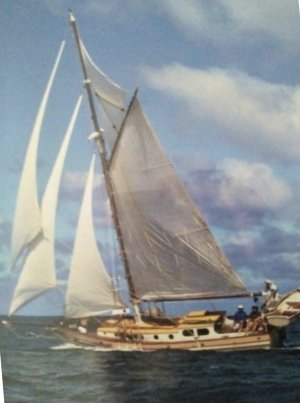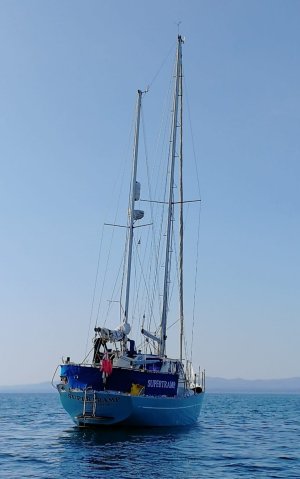Samsara
New member
New to this thread and new to yacht ownership, however, in for a penny …
My timber gaff-rigged cutter is 35ft and weighs approx 14 tonnes. She is of course tiller-steered and tends to be ‘heavy’ when not balanced enough to enable me to leave the helm.
The transom is rather encumbered with overhanging davits supporting the usual kayak, ladder, fender-board etc.
Can anyone assist please with a self-steering set-up - I’m very keen to learn to sail Samsara single-handed?
Paul
My timber gaff-rigged cutter is 35ft and weighs approx 14 tonnes. She is of course tiller-steered and tends to be ‘heavy’ when not balanced enough to enable me to leave the helm.
The transom is rather encumbered with overhanging davits supporting the usual kayak, ladder, fender-board etc.
Can anyone assist please with a self-steering set-up - I’m very keen to learn to sail Samsara single-handed?
Paul


